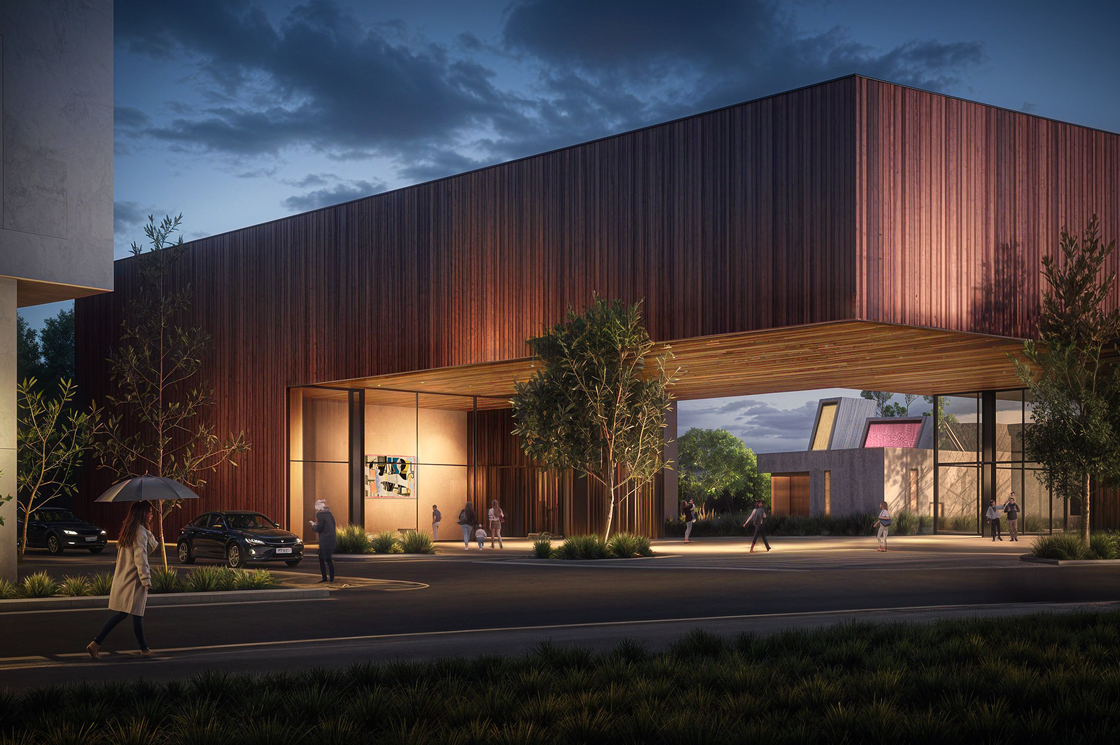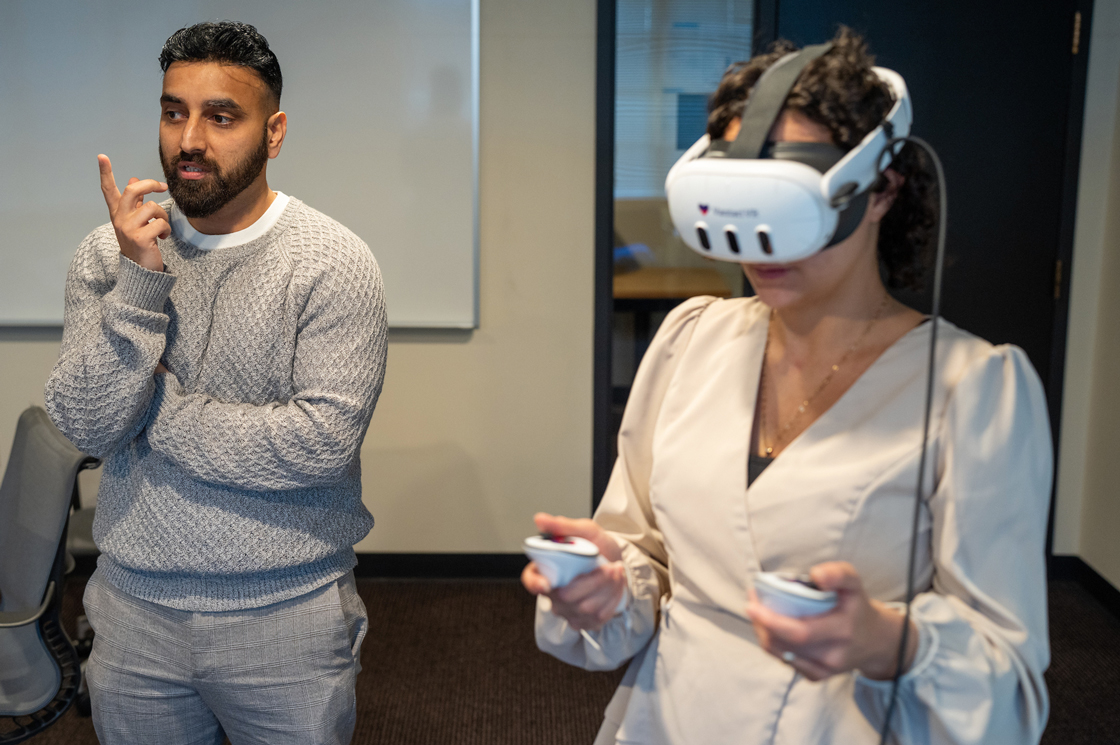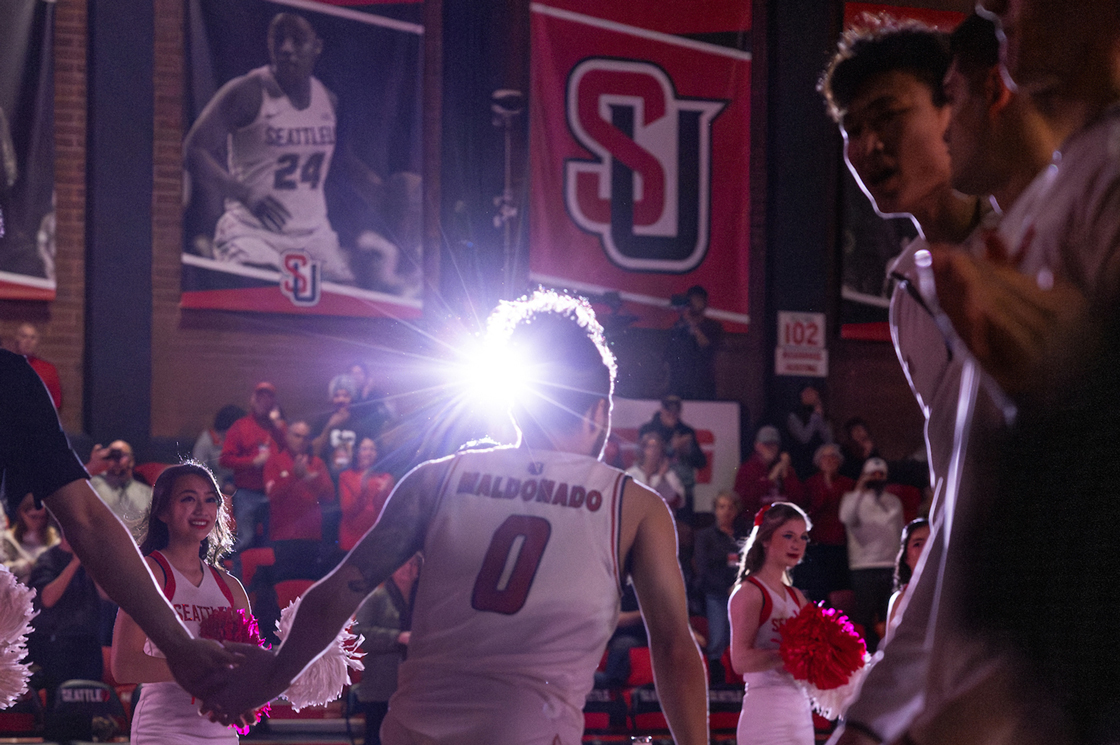/0x14:1900x1226/prod01/channel_34/media/seattle-university/news-amp-stories/magazine/spring-sum-2025/Digital_Mag_coverdesign_landing-page-hero.jpg)
From arts and health sciences to athletics, Seattle University embraces transformative change that elevates its mission and reach.
In what was called a “historic” move for two venerated Seattle institutions, the joining of the Cornish College of the Arts and Seattle University signals an exciting new era for arts education in the city and beyond.
The Cornish College of the Arts at Seattle University preserves the Cornish legacy for future generations and will transform arts education in Seattle, opening up exciting interdisciplinary opportunities for students and faculty on both campuses.
“As two distinguished institutions come together, we unite the strength of a nationally recognized arts college with depth of a Jesuit education,” says Provost Shane P. Martin. “This marks the beginning of a bold new chapter for Seattle University, one that ensures our students will benefit from world-class, interdisciplinary experience that blends creativity, critical thinking and purpose.”
Seattle University is well-positioned heading into the next phase of integration to carry the Cornish legacy forward and enhance arts education. Beyond Cornish this also includes the Seattle University Museum of Art, a true teaching museum that will house the $300 million Hedreen art collection—the largest gift of art ever to a U.S. university.
The Cornish College of the Arts and forthcoming art museum are just two examples of how Seattle University is positioning itself for the future, rising to and meeting the needs of today’s students and industries and raising its regional and national profile.

Expanding Arts, Nursing and Athletic Programs
Cornish College of the Arts is just one of the transformational moments for Seattle University.
On July 1, Seattle University began a new era for athletics excellence as a new—but returning—member to the West Coast Conference. With the WCC’s shared focus on faith-based education and a strong national prominence, this transition elevates the university’s visibility and impact. As a member of the WCC SU is poised to soar to new heights, bringing the Redhawk spirit to an elite level of intercollegiate competition.
President Peñalver says the move is exciting for student athletes, alumni and the university as a whole. Being part of the WCC “places SU in excellent position for the future in the rapidly changing world of college sports. We are especially well-aligned with the conference and its member schools from an academic, athletics and geographic standpoint.”
In an effort to fill a critical need for health care professionals and to build on the stellar reputation of producing high-quality, Jesuit-educated nurses and health care professionals who put the care of people first, Seattle University’s College of Nursing has expanded to become the College of Nursing and Health Sciences.
The College of Nursing and Health Sciences will enhance Seattle University’s institutional identity as a hub and model for health innovation in the service of others, while deepening the college’s partnerships with health care systems in the Puget Sound region.
“The expanded College of Nursing and Health Sciences will build on the longstanding tradition of excellence in our nursing programs, respond to the growing demand for interdisciplinary health sciences education and research and serve the communities in our region by addressing health care workforce shortages,” says Provost Martin.

Cornish College of the Arts at Seattle University
Cornish College of the Arts at Seattle University marks an exciting new chapter combining Cornish’s century-long legacy of innovation as an independent arts college with Seattle University’s deep commitment to academic rigor and educating the whole person.
This past March, the boards of trustees and presidents of Seattle University and Cornish signed the agreement to establish Cornish College of the Arts at Seattle University, with all of Cornish’s assets transferring to Seattle University, including its South Lake Union campus. Divisions throughout SU and Cornish have been working to integrate the staffs and systems to ensure a smooth transition heading into the next academic year.
“The combination of Cornish with Seattle University preserves the Cornish legacy for future generations and will transform arts education in Seattle, opening up exciting interdisciplinary opportunities for students and faculty on both campuses,” says President Peñalver.
Key to launching Cornish at Seattle University was a sense of continuity to ensure students continue receiving the high-quality arts education they expect, while enhancing the student experience with all SU has to offer. Cornish College of the Arts at Seattle University is led by Dean Brian Harlan, who previously served as Provost and Vice President of Academic Affairs at Cornish.
As two distinguished institutions come together, it combines the strength of a nationally recognized arts college with the depth of a Jesuit education, marking the beginning of a bold new chapter for Seattle University.
Read on for more about Cornish College of the Arts at Seattle University: Cornish at SU is Here.

Seattle University Museum of Art
When philanthropist Richard Hedreen made a transformative $300 million art gift to Seattle University in March 2024, it included $25 million in seed money toward the creation of a new art museum. And now those plans are coming into view.
The university selected award-winning architect Tom Kundig, principal/owner and founder of the highly regarded Seattle-based global design firm Olson Kundig, as the architect for the Seattle University Museum of Art (SUMA). Groundbreaking on 12th Avenue at the entrance of SU’s campus is anticipated for August 2026, with a museum opening prior to the start of classes in fall 2028.
This museum will not only house an extraordinary collection of art but also serve as a welcoming gateway to campus and a dynamic space for learning, reflection and community engagement.
Envisioned as a teaching museum, SUMA will be a valuable addition to both Seattle University’s campus and the greater Seattle community. The design artistic renderings illustrate how the museum will create a true destination for members of the Seattle University community as well as visitors, families and neighbors, fostering a greater sense of connection and accessibility.
As a Core Curriculum tool, the teaching museum will provide students with new entry points into issues and problems in their studies, creating new experiences through their encounters with art, while provoking collective insights through group discussions in front of powerful works of art in a setting outside a typical classroom. It will include flexible gallery space designed to accommodate performance art, music and select theater productions.
It will also permanently house and display the remarkable Hedreen art collection. Comprised of more than 200 works spanning the 15th and 16th centuries to modern and contemporary works, it is regarded as among the most prized and finely curated private collections in the U.S. It features works from the greats such as Jacopo da Pontormo, Thomas Gainsborough, Willem de Kooning, Roy Lichtenstein and Andy Warhol, among many others.
Read on for more about the Seattle University Museum of Art: Olson Kundig to Design Seattle University Museum of Art.

College of Nursing and Health Sciences
In an effort to fill a critical need for health care professionals and to build on the stellar reputation of producing high-quality, Jesuit-educated nurses and health care professionals who put the care of people first, Seattle University’s College of Nursing has expanded to become the College of Nursing and Health Sciences.
The College of Nursing and Health Sciences will enhance Seattle University’s institutional identity as a hub and model for health innovation in the service of others, while deepening the college’s partnerships with health care systems in the Puget Sound region.
“The expanded College of Nursing and Health Sciences will build on the longstanding tradition of excellence in our nursing programs, respond to the growing demand for interdisciplinary health sciences education and research and serve the communities in our region by addressing health care workforce shortages,” says Provost Martin.
The College of Nursing and Health Sciences will be led by Dean Butch de Castro, transitioning from being dean of the College of Nursing to now serve in an enhanced role as the Charles M. Pigott Dean, named for the retired chairman and CEO of PACCAR, Inc., whose $5M gift made the College of Nursing and Health Sciences deanship possible. The endowment will also support new programs aimed at addressing the most pressing health care industry and workforce needs. Serving alongside Dean de Castro is Vice Dean for Nursing Dr. Melissa Owen.
“I deeply appreciate the selfless generosity of Mr. Pigott and his belief in our commitment to addressing the health care needs of communities throughout the Pacific Northwest and beyond,” de Castro says. “His gift strengthens our institutional ability to live out our Jesuit tradition in service of the greater good.”
On the academic front, nursing programs—Bachelor of Science in Nursing and Doctor of Nursing Practice programs (with specializations in Acute Care Nurse Practitioner, Nurse-Midwifery, Family Nurse Practitioner, Health Systems Leadership, Psychiatric Mental Health Nurse Practitioner and Women’s Health Nurse Practitioner)—will remain the cornerstone of the college. Additional program offerings will create opportunities for students to pursue various career paths to contribute to the greater good.
Read on for more about the College of Nursing and Health Sciences: A Bold Step Forward in Health Education.

West Coast Conference
Early on a Tuesday morning a group of Seattle University representatives led by President Peñalver raised the SU flag atop the Space Needle, marking the university’s historic move to the West Coast Conference. Reflected in the 2025-26 season of play, this is a return to our roots as a former member of the WCC and signifies a bold step forward in SU’s commitment to excellence in academics, athletics and community engagement.
Being a member of the WCC will naturally bring more eyeballs to SU’s D-I athletic programs (via televised games on ESPN), another reputational boost as a top Jesuit Catholic university. There is also a greater likelihood to attract and retain students and an invigorated fan base—including alumni—cheering on Redhawks basketball, soccer, rowing or any one of the 14 sports that are part of conference play.
“Our student athletes will receive an unparalleled experience, reaping the rewards of competing against talented peers at mission-aligned universities within a tight geographic footprint,” says Vice President of Athletics Shaney Fink.
Seattle University will be competing as one of 10 universities that make up the WCC, joining fellow Jesuit institutions Santa Clara and Loyola Marymount, along with West Coast Catholic schools including the University of Portland and the University of San Diego, with whom SU has forged deep institutional ties over many decades.

A big draw will be the basketball matchups, with schedules released in the fall. The competitive slate will include home games vs. Washington State, Gonzaga, Oregon State and the University of San Francisco. The first WCC match-up that SU will host is women’s soccer vs. Pepperdine at 7 p.m., September 27, at Championship Field.
In 1971, after decades of success as a Major Independent (non-conference affiliated), Seattle University joined fellow West Coast Jesuit universities Loyola Marymount University, Santa Clara University and the University of San Francisco as a member of the WCC, which at the time was known as the West Coast Athletic Conference.
“With the leadership of President Peñalver and Shaney Fink, Seattle is well-positioned to thrive,” says WCC Commissioner and Albers alum Stu Jackson, ’78. “The conference expands its footprint in the Pacific Northwest and visibility nationally with the addition of one of the nation’s top media markets. Seattle is an important part of the conference’s history and we are thrilled for their return to the WCC.”
Read on for previous coverage on the move to the WCC:
/0x208:1130x922/prod01/channel_34/media/seattle-university/news-amp-stories/images/Alonso-headshot-use-this-1130X1130.jpeg)
/63x0:1068x635/prod01/channel_34/media/seattle-university/news-amp-stories/images/SU-TW-history-photo-1130X635.jpg)
/0x37:2240x1452/prod01/channel_34/media/seattle-university/news-amp-stories/magazine/fall-2025/Campus_Store_Newstory.jpg)